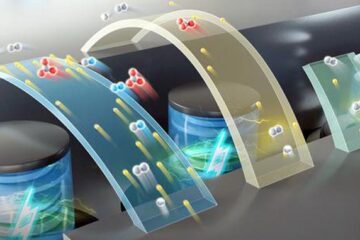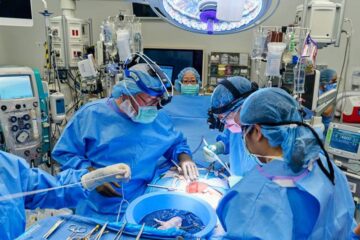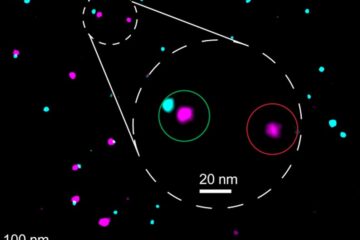Mice could provide the key to growing human lungs for transplant

Scientists from Imperial College London have successfully directed mouse stem cells to turn into the type of cells needed for gas exchange in lungs, bringing the prospect of being able to regenerate damaged lung tissue, and even the creation of artificially grown lungs one step closer.
Dr Anne Bishop, from Imperial College Tissue Engineering and Regenerative Medicine Centre at Chelsea and Westminster Hospital, comments: “This research will make it possible eventually to repair lungs that have been damaged by disease, by implanting fully functioning lung cells to repopulate damaged areas. Also, unlike transplantation from a donor, the cells can be developed in such a way that the body will not reject them”.
The research, the first of its kind in the world, involved taking mouse stem cells, and then placing them in a specialized growth system, which encouraged them to change into the cells that line the part of the lung where oxygen is absorbed and carbon dioxide excreted.
Professor Julia Polak, Director of the Centre, adds: “This is the first time research of this nature has been carried out, and it has provided us with a crucial building block towards being able to construct lung tissue. It could eventually mean the end of extensive transplant waiting lists for critically ill patients.”
The researchers at Imperial College Tissue Engineering and Regenerative Medicine Centre at Chelsea and Westminster Hospital now plan to use their findings to begin development of a living construct, using specially designed bioactive foams and scaffolds. The bioactive scaffolds will provide a frame on which the cells can grow, and then be transplanted.
Media Contact
All latest news from the category: Life Sciences and Chemistry
Articles and reports from the Life Sciences and chemistry area deal with applied and basic research into modern biology, chemistry and human medicine.
Valuable information can be found on a range of life sciences fields including bacteriology, biochemistry, bionics, bioinformatics, biophysics, biotechnology, genetics, geobotany, human biology, marine biology, microbiology, molecular biology, cellular biology, zoology, bioinorganic chemistry, microchemistry and environmental chemistry.
Newest articles

High-energy-density aqueous battery based on halogen multi-electron transfer
Traditional non-aqueous lithium-ion batteries have a high energy density, but their safety is compromised due to the flammable organic electrolytes they utilize. Aqueous batteries use water as the solvent for…

First-ever combined heart pump and pig kidney transplant
…gives new hope to patient with terminal illness. Surgeons at NYU Langone Health performed the first-ever combined mechanical heart pump and gene-edited pig kidney transplant surgery in a 54-year-old woman…

Biophysics: Testing how well biomarkers work
LMU researchers have developed a method to determine how reliably target proteins can be labeled using super-resolution fluorescence microscopy. Modern microscopy techniques make it possible to examine the inner workings…





















